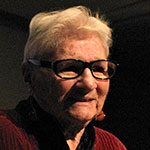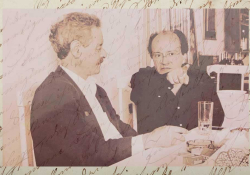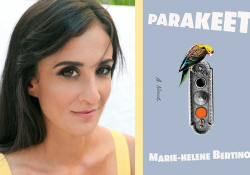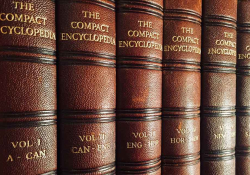The Writers Who Left: Cuban Exile and What Comes Next
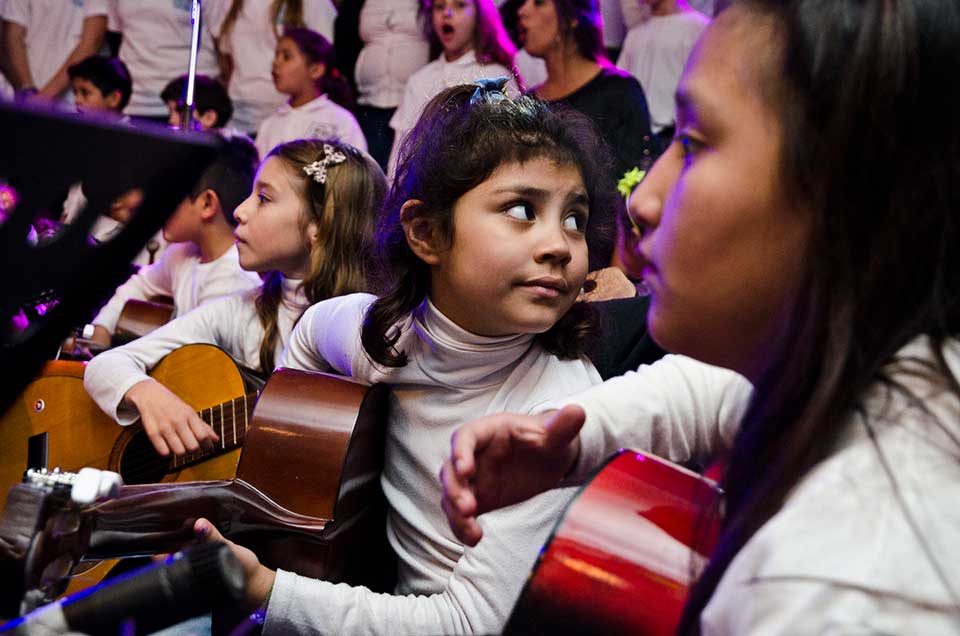
When good engineers or scientists emigrate, they are able to continue their work. Novelists no. A good novel is nourished by the sap of one’s own culture, one’s people, and what happens in daily life.—Ricardo Jorge Machado[i]
A recurring drama when I lived in Cuba throughout the 1970s was the periodic emigration of citizens from all social strata who for one reason or another felt compelled to leave their homeland. This might take place in waves, such as the Mariel exodus in May 1980 when 125,000 people boarded boats for southern Florida. Or it might be a high-profile individual: a baseball player who wanted to join the Major Leagues, a well-trained physician who believed he or she could earn more elsewhere, or a poet or novelist who was fed up with the Revolution and wanted to try their luck in another country (most often the United States). All were considered traitors and departed amidst a barrage of vituperative harassment.
Heberto Padilla was one such poet. In the late 1960s he entered a collection of his work in an important literary contest. The book, Fuera del juego (Outside the game), was given first prize by an international jury. As it was perceived as being critical of the Revolution, the power structure didn’t know what to do with the decision; it eventually decided to publish the book but with a written disclaimer. Perhaps it believed this covered all bases: the poet’s right to speak freely and the Revolution’s right to protect its interests.
These interests, with regard to artistic freedom, had been clearly laid out by Fidel Castro in his June 1961 “Words to the Intellectuals.” The most frequently quoted line from that speech was “Within the revolution, everything; against the revolution, nothing.” Through subsequent decades, that statement has been interpreted in different ways. Many say it is proof of the fact that no art or literature critical of the revolutionary project will be tolerated. I believe history has borne out a different interpretation. Despite unfortunate repressive periods, when narrow-minded mediocrity prevailed and many individuals suffered as a result, the general arc of freedom within the Cuban revolution has trended toward greater and greater freedom and room for thoughtful dissent.
Despite unfortunate repressive periods, the general arc of freedom within the Cuban revolution has trended toward greater and greater freedom and room for thoughtful dissent.
The word “against” is key to Fidel’s intention. A man known for choosing his words carefully, he didn’t say “challenging” or “dissenting from.” He was not saying that no one could criticize the Revolution. One can point to hundreds of critical films, novels, poems, art installations, photographic exhibits, song lyrics, and essays that have been produced inside the country throughout these years, have become part of an accepted pantheon, and have generated useful polemics. Jokes about the commander-in-chief abound in the popular discourse. Satire is a national pastime. What Fidel was saying, back in 1961, was simply that the Revolution has a right to exist and that no work that is against it—i.e., aimed at destroying it—will be tolerated. I can have no argument with that.
Heberto Padilla’s story is both sordid and illustrative. As a well-known intellectual, he frequently entertained foreign journalists. His bitter rantings were a thorn in the side of a number of high-level officials in the cultural arena; they seemed to dare the authorities to take note. At one point, Padilla was arrested and held for thirty-seven days in a State Security cell. Upon his release, he delivered a confession in the form of a contrite and embarrassing speech in which he mentioned fellow writers by name, pompously warning them against transgressions such as those he’d committed. Eventually he left the country. Once in the United States, he claimed he had designed the language of his confession to mock his interlocutors. Anyone who knew him, he said, would know its clichéd language wasn’t his.
Padilla enjoyed brief fame as the Cuban Revolution’s enfant terrible. He was embraced by those in his chosen country who used his story to denigrate the socialist state. I would argue that by paying so much attention to the dissident poet, the Revolution contributed to this narrative. If it had simply ignored Padilla’s rantings and left him alone, there wouldn’t have been a Padilla case. There were a number of reasons this was unlikely at the time. One was the momentary power enjoyed by mediocre minds. With immature shortsightedness, those in control of Cuban culture back then thought they were proving an important point. Considering the central place poetry and poets have in the new society, another reason the Padilla case played out the way it did was undoubtedly fear. Fear of anything that might threaten a precarious and oft-attacked project.
From almost five decades’ distance, I’m interested in what happened to Padilla the man, Padilla the poet, after leaving his native land. Neither newfound laurels nor absurd vilification allowed him the creative energy required to continue producing important work. Heberto Padilla never again wrote poetry that fulfilled the promise of his earlier books. Although several US universities employed him, he didn’t find the greener grass he sought. He died in 2000 at the age of sixty-eight, far from home and without having produced another major book.
The Padilla case gained notoriety on both sides of the ideological divide. The way Cuba handled the poet produced anxiety among poets on the island and provoked negative reactions from a number of intellectuals and artists internationally. Some of the latter broke with the Revolution; several of these soon reconsidered, claiming they couldn’t really evaluate the situation fairly from the outside.
Was this incident an anomaly or one of many? Is it indicative of larger issues involving socialist revolution and the arts, or the Cuban Revolution in particular and its evolving attitude toward artists? What happens to artists and writers when, for whatever reason, they are expelled from their homeland in traumatic circumstances? Despite solid personal reasons for emigrating, the vast majority of Cuban artists and writers who left their country have found it difficult to adjust to a new home, whether in the United States, Spain, Mexico, or elsewhere.
* * *
I lived in Cuba from mid-1969 through the end of 1980. During that decade, I took part in the country’s literary scene, reading my work in a variety of venues—theaters, neighborhoods, factories, farms, prisons—and following the work of others. I return often. On a 2019 visit I noticed that the lives of ordinary citizens seemed much as they’d been on a previous trip the year before: people still struggling to make ends meet, still spending more time than they’d like searching for scarce necessities—this time around it was bread and cooking oil—still frequently working in the tourism sector rather than as engineers or in other professions for which they’d been trained because they could earn more in that sector. At the same time, in the provinces as well as in Havana, old buildings were being restored, and fresh paint was in evidence. Some issues were being resolved while others wait.
In Cuba, life’s major needs are covered: universal health care, free education from kindergarten through postgraduate work, a basic program of social welfare. You don’t see homeless people begging on the streets. On one hand, it is extraordinary that such a poor country, battered by years of brutal US economic sanctions, is able to provide these basics that do not exist in much wealthier countries such as the United States. On the other, I sensed a palpable exhaustion. Sixty years is a very long time to wait for substantial improvement in daily lives. Many adults in today’s Cuba have no memory of a time before the 1959 Revolution.
This exhaustion affects Cuba’s demographics. Current statistics tell us that 19,000 young people are leaving the country each year. These are well-educated youth who go in search of what they perceive as a broader range of opportunities, greater personal freedom, the chance to explore individual possibility even when it comes at the expense of the common good. At the same time, 6,000 elderly people return to retire on the island yearly.[ii] They bring with them pensions or social security checks yet comprise an economically inactive and ultimately dependent social sector. This ratio of emigration to immigration, along with enhanced life expectancy and a low birth rate, makes for the oldest population in the hemisphere.
In this difficult context, a particular reality astonished me: the enormous emphasis the Cuban State places on culture and the arts. With hard currency at a premium, the amount of money Cuba spends on cultural events, art schools, a highly subsidized publishing program, museums, civic bands and orchestras, galleries, literary prizes, free concerts and exhibitions, and stipends to thousands of writers and artists who live from doing their own work is very simply unimaginable to those of us who live in a country where the arts have always had to struggle for minimal governmental support.
The Cuban Revolution considers culture a necessity rather than a luxury, as important to the whole human being as health, education, adequate housing, or a decent job. I have tried to find out what percentage of its GDP the Cuban government spends each year on culture and the arts. I haven’t yet been able to find a precise statistic and don’t know if one is available. One problem is that money for the arts and sports are calculated together. According to the Cuban Ministry of Culture’s data for 2017, 4.8 percent of the country’s budget goes to these two areas. Three percent of what is currently being spent (2019) is going to the combined categories. Cultural education is not included in this statistic, meaning education not aimed directly at forming people in the artistic specialties. Neither are the expenses incurred in the administration of cultural events.[iii]
The Cuban Revolution considers culture a necessity rather than a luxury, as important to the whole human being as health, education, adequate housing or a decent job.
According to data published in 2015, the World Bank proclaims Cuba a world leader in education. It lists the country as having invested nearly 13 percent of its GDP in this sector, in contrast with the United States and Canada , which spend 5.4 percent and 5.5 percent of their GDP, respectively, to educate their populations.[iv]
Of course, these figures don’t tell the whole story. One must inquire into how they are calculated. It is important to determine what kind of education, not simply whether it is free and covers cradle to adulthood. One must ask if educational opportunities cross class and racial lines, if the schooling of girls and women matches that of boys and men. Do the educational resources available in poor neighborhoods equal those in wealthier enclaves? Are the needs of students with learning difficulties being met? Of interest as well is whether critical thought is encouraged and what avenues for dissent exist. The Cuban Revolution quickly achieved educational equity in terms of class, race, and gender. Special-needs students also receive appropriate educations. Issues of critical thinking and dissent have had their ups and downs; there have been periods of repression as well as an arc that points to increasing freedom of expression.
It cannot fail to impress that, according to UNESCO, Cuba’s literacy rate is 99.8 percent. This extraordinary achievement began with the dazzling literacy campaign carried out by the entire nation in 1961. Follow-up programs kept raising standards as well as broadening opportunities. At times it has seemed that the country is one big school. UNESCO also reports that Cuba ranks first among all the Latin American countries in every subject and stresses that a Cuban student has twice the knowledge and skills of the average student in the region.[v] While too many countries employ austerity measures to try to deal with social ills, Cuba shows that locating the human being at the center of the social project maps a sound road to intellectual, artistic, and emotional health.
Another reason I haven’t been able to determine the precise percentage of its GDP that Cuba spends on the arts may have to do with the fact that the country still struggles with the complexities implicit in a dual economy: Cuban pesos (CUP), in which almost all salaries are paid and necessities bought, and convertible currency (CUC) spent by tourists, which make up some salaries such as those earned by the nation’s global solidarity workers (doctors, construction crews, and experts in a variety of fields) and can be spent at luxury stores and certain upscale hotels and restaurants. Inside the country, in the arts all salaries, monetary prizes, subsidies, and the like are paid in Cuban pesos.
The Fund for the Development of Culture and Education (FONCE), a government institution under the auspices of the Ministry of Culture, is charged with collecting all profits earned in convertible currency by the companies that commercialize cultural products and redistributing those profits to areas that earn little or nothing in that currency: books, arts education, museums, and so forth. As an example, Cuba’s Union of Writers and Artists (UNEAC) pays writers and artists in CUP. It also pays part of the printing bills for its two magazines in that currency. But the major portion of its printing bills—that which covers paper and ink purchased outside the country—must be paid in CUC. Until Cuba is able to unify its monetary standard, it will be difficult to determine exactly what percentage of the GDP goes to culture and the arts.
* * *
I traveled to Cuba in March to take part in the 2019 Matanzas Book Fair. Each February, Havana hosts an enormous international book event, increasingly a destination for writers, editors, and publishers. Then, beginning the following month, successive editions of the fair move east across the island. Each weeklong event showcases the particularities of the area’s history and culture. The first of these takes place in Matanzas, the next province over and one with a rich intellectual and artistic history. Several of my books have been published in Spanish editions by Matanzas publishing houses, and this was my third attendance at the Matanzas fair.
The weeklong celebration includes several hundred unveilings (this year a series of plaques honoring the city’s most illustrious poets and artistic traditions), city-wide commemorations, book launches, readings, lectures, panel discussions and public conversations, concerts and roving troubadours, theatrical productions, and art exhibitions. These are staged in a variety of venues, including theaters and plazas, schools and universities. This year’s inauguration took place in the elegant hall of mirrors in the city’s largest theater. The closing session was held at the Fire Station Museum, surrounded by a display of old engines.
One festive event is the “signing stand,” an open-air stall on the promenade that borders the river. Those with books that have made their appearance during the fair do hour-long stints at which publishers literally hawk the books, enticing potential buyers to take a look at those on offer and, if they decide to purchase one, have it signed by the author. Subsidized publishing means that books are accessible to everyone. Interesting conversations always take place at the signing stand.
One of the most exciting things about Cuban book fairs is the extent to which the entire population participates.
One of the most exciting things about Cuban book fairs is the extent to which the entire population participates; people from all walks of life crowd the variety of activities, attend public forums and purchase books, show up at exhibitions of the visual arts, dance programs, and concerts, vociferously demonstrating likes and dislikes. Children of all ages enjoy events designed for them. The famous “living statues,” men and women in full metallic body paint, appear unexpectedly and impersonate deceased artistic figures, their slightest movement indicating they are not really statues but people.
This sort of popular participation can only happen in a country where literature and the arts have truly been made available to everyone. This year my time at the signing stand happened to be on the morning of March 8, International Women’s Day. More than a few men bought copies of my books and asked that I dedicate them to wives or girlfriends, while a few feet away kayaks skimmed the waters of the San Juan River, a number of them with women at the paddles.
The country’s economic woes were also in sad evidence at the Matanzas Book Fair. A sizable number of new titles failed to make their appearance due to technical problems at the country’s large print shops. Aged equipment and a shortage of replacement parts, paper, and ink conspired to keep some books from making their scheduled launches. When this happened, promoters and authors made the best of a disappointing situation; they explained that the book’s publication was delayed and turned the event into a lively discussion or reading of available work.
Yet in the midst of such problems, the effort and resources that go into literature, art, and culture remained impressive. Books that did make it into print were produced in beautiful editions and sold to an avid reading public for pennies. Large cultural events were staged with sensitivity and elegance. Visiting writers and artists were housed and fed expansively. Local writers told me they continue to earn salaries for writing; it seemed like a natural state of affairs to them. It is clear that art and culture continue to be priorities in Cuba.
* * *
All this got me thinking about some of Cuba’s important writers who left the country, especially back in the 1960s and ’70s when doing so meant they would forfeit homes and other possessions and knew they would not be able to return. I’m not talking about those who left as children—Ruth Behar, Cristina Garcia, et al.—or those who left in the days immediately following the victory of the Revolution such as Gastón Baquero, José María Rodríguez, Ana María Simo, or José Kozer. But those who left after having experienced the Revolution for a decade or more and decided they could not continue to reside in the land of their birth.
Happily, Cuba has revised the draconian laws it applied to citizens leaving during the Revolution’s early decades. They were considered traitors back then, called gusanos (worms), mocked and harassed and, except in rare instances, prevented from returning if they wanted to come home. A number of important writers left in such circumstances, most of them going on to become the Revolution’s most vocal critics. Today Cubans come and go at will. Several years ago, a Cuban poet who had emigrated to Colombia needed a kidney transplant. He returned to his homeland where the Revolution provided all his medical attention gratuitously, as if he’d never left.
I thought of novelists Guillermo Cabrera Infante, Severo Sarduy, Antonio Benítez Rojo, Jesús Díaz, and Reinaldo Arenas; essayist Edmundo Desnoes; poets Heberto Padilla, Belkis Cuza Malé, and Ramón Fernández Larrea; oral historians Mayda Ochoa and Mayra Martínez; journalist Minerva Salado. There were and are others, of course. No studies have been made, and what occurred to me as I thought of these writers is purely anecdotal. It nevertheless seems significant. In their vast majority they wrote their best works in Cuba, rarely if ever again producing anything close to what had earned them their original prominence in the pantheon of contemporary Latin American letters. Exceptions are Severo Sarduy and Reinaldo Arenas, both of whom continued to write noteworthy books in exile.
Guillermo Cabrera Infante left Cuba in 1965. His most famous novel, Tres tristes tigres (Eng. Three Trapped Tigers, 1971) was published in 1967 but was completed a couple of years earlier. Edmundo Desnoes left in 1979. His most famous work, Memorias de subdesarrollo (Eng. Inconsolable Memories, 1967 / Memories of Underdevelopment, 2004), had been written more than a decade earlier. Antonio Benítez Rojo left in 1980. His major work, the trilogy entitled El mar de las lentejas (Eng. Sea of Lentils, 1990), had been published the year before, as had almost all the books he wrote. Reinaldo Arenas left in 1980 after turbulent years in and out of prison. His best-known work, Antes que anochezca (Eng. Before Night Falls, 1993) was published in 1992, making him an exception to my observation.
Jesús Díaz, who emigrated in the 1990s, won the Casa de las Américas prize for best novel in 1966 with Los años duros (The hard years). Two other excellent novels, Las iniciales de la tierra (1987; The Initials of the Earth, 2006) and Las palabras perdidas (1992; The lost words), were also written before he left the country in the mid-1990s. I knew Jesús Díaz personally. He was one of the founders of the important cultural supplement, El Caimán Barbudo, in 1966; a magazine that was home to several generations of young Cuban writers. I remember Jesús as brilliant but annoyingly dogmatic at times; once he criticized me harshly because he thought one of my poems had the wrong take on a political issue. Friends who saw him in Madrid, in the years leading up to his death at sixty-one, say he was embittered and that he as well as his wife had become consumed by alcoholism. Ricardo Jorge Machado, in the same text from which I quote at the beginning of this essay, went on to write about Díaz: “He wasn’t the Victor Hugo of the Cuban Revolution although he might have been. Neither is he remembered for having read Kant. As a person, Jesús turned out to be a broken dream, a glass that shatters little by little until it breaks. But the books he wrote when he was still committed to the Revolution are something else. They sent us a message that lives, one we can claim. I hope they will be republished.”[vi]
Sarduy and Arenas were homosexuals whose work explicitly portrayed gay themes at a time when that subject matter was spurned and censored in Cuba. This may explain their having felt suffocated in their native land and making the choice to leave. Yet a number of other homosexual writers remained in Cuba, addressed their sexual identity in their work, and demanded or simply waited out their right to be heard and published. I am thinking of Virgilio Piñera, José Lezama Lima, Mirta Aguirre, Antón Arrufat, Miguel Barnet, Mirta Yáñez, Nancy Morejón, Alfredo Zaldívar, and Laura Ruiz Montes. Gay Cuban writer Lourdes Casal rejected the Revolution and left her homeland as a young adult but returned to become one of its staunchest defenders, eventually dying in Havana. Some writers raised the Revolution’s ire by promoting black power or other dissident themes. What was seen as genuine rebellion in the United States seemed to threaten a Revolution that encouraged unity as it confronted increasing opposition from the North. These writers endured repression until the Revolution came to its senses with regard to their lives and their art.
I have long felt that Cuban poetry is particularly strong. Over the years I put together several collections,[vii] and in 2016 published a comprehensive anthology with bilingual facing-page texts, Only the road / solo el camino: Eight Decades of Cuban Poetry.[viii] In doing this book I subscribed to the “whole island” concept and included poets living outside Cuba as well as those who have remained in their homeland. I made the selection, wrote the introduction and notes, and did all the translations. The collection includes fifty-six poets, beginning with two born in 1902 and ending with one whose birth year is 1981. Almost half are women; and gay, lesbian, and transgender writers, authors from different provinces, and those who write in a variety of styles appear in its pages. As I read the work of those who had emigrated, I realized, once again, that the poems I liked best had been written before those poets left home. With few exceptions, those were the ones I chose to include. The same is true of the Cuban poets whose books I have translated. The vast majority continue to live on the island.
I wondered if this inability to produce major texts in exile was, in fact, a shared phenomenon. And if so, what made it so difficult—often impossible—for important Cuban writers to continue to do their major work once they’d left home? Were they traumatized by the shaming indignities to which the Revolution subjected them when they left? Undoubtedly. Did finding their voices again become impossible in a strange country with a different culture and language? I’m sure this also played a part. When people must struggle to find a job and gain access to health care, creative work can be a luxury.
What made it so difficult—often impossible—for important Cuban writers to continue to do their major work once they’d left home?
I thought of other groups of émigrés from other places: the artists, writers, and musicians I knew who’d been forced to flee Chile, Argentina, and Uruguay during the Dirty Wars of the 1970s and ’80s. Their situation was different, of course. They didn’t leave their homelands out of choice but were pushed out by tyrannies, often escaping with little more than their lives. Most ended up in exile communities where they encountered some degree of solidarity and support. In Paris the Uruguayan singer/songwriter Daniel Viglietti kept on writing powerful songs. The Chilean musical ensemble Inti-Illimani did as well. I remembered my friends Miguel Donoso Pareja and Judith Gutiérrez, Ecuadorian writer and painter, respectively, who came to Mexico in the 1960s when we were living there. Mexico has a long tradition of welcoming creative artists fleeing repression in circumstances, running from Spain’s civil war and Europe’s fascist takeover to war-torn South and Central America. Yet most of these refugees produced some of their finest work as refugees. So, it’s not that their forced moves didn’t deeply affect those concerned. But the circumstances were different and those involved less alone in most cases. The Cuban experience has definitely been unique within the Latin American context.
I believe the inability of so many Cuban writers in exile to continue to grow in their work may primarily be due to the difference in the two sociopolitical systems. In socialism, culture and art are considered necessities and those who produce their products seen as contributing importantly to society as a whole. In capitalism, art is a commodity. Its goal is to make a profit for those selling it: literary agents, critics, publishers, galleries, museums. Cuban writers or artists may feel that they cannot continue to live in a country that doesn’t respect their idiosyncrasies. The grass may look a whole lot greener somewhere else, but once there, adjustment may not be so easy.
Ramón Martínez Grandal, a Cuban photographer who was my teacher and close personal friend, left the island in the mid-1990s. He tried to establish himself in Venezuela but soon found that the artistic community in Caracas was unnervingly competitive. It lacked the sort of solidarity to which he’d been accustomed in Havana. He decided to move his family back to Cuba, and the Revolution—on the cusp of making changes to its policies regarding those who leave—received him generously. But he felt, once again, that he didn’t fit in. He returned to Caracas, a city that all too soon became so violent he was afraid to stay. Then he went on to the United States, where he spent the last several years of his life. He died in a Miami hospital without ever again having produced the brilliant work that made such a name for him Cuba.
A friend with whom I talked about these ideas said that what I had discovered wasn’t only true of writers but also for musicians and visual artists. She pointed out that most of the great Cuban musicians who left early on also failed to produce great music in exile. She echoed the basic differences between how art and culture are regarded in socialist and capitalist societies but took the argument further. In Cuba, she said, art is produced for the masses, while in capitalist countries it is produced for the elite. This has all sorts of ramifications. For example, in the US original fine art pieces sell for millions while copies also become an industry; art for the masses earns in quantity what that for the elite does in quality. Similarly, best-selling novelists earn advances in the tens of thousands of dollars while poets and essayists rarely earn anything from their work. In Cuba, the arts are supported by the state—a very different story. The upshot is that writers and artists who seek freedom by leaving their homeland and going somewhere else basically only acquire the necessity and freedom to make money, if they are fortunate enough to be able to do so.
There is also the issue of cultural familiarity. Writers who grow up among palm and mango trees naturally paint or write from that landscape. It might not be so easy for them to write in the midst of an apple orchard. Writers also work with words. Their palette depends on rhythm, measure, idiomatic phrasing, humor, slang—all entirely different when one is surrounded by the daily sounds of a language not their own.
Cuban poet Víctor Rodríguez Núñez lives and teaches in Ohio but maintains a home in Havana and spends large parts of each year there. He is of the more fortunate generation of artists and writers who were able to go live somewhere else without cutting ties with their homeland. Víctor recently said: “Let me be clear. I live in the Unites States because I want to. I don’t always write about Cuba, but I always write from Cuba.”
Albuquerque, New Mexico
[i] Ricardo Jorge Machado, “Jesús Díaz: Sueños de cristal y otros recuerdos de la época,” April 27 2019 (translation mine).
[ii] These statistics are from a conversation with Juan Luis Martín, executive secretary of the High Council on Social Sciences, Ministry of Science, Cuba.
[iii] In an email from Jorge Fornet, who obtained these statistics from the minister of culture.
[iv] Salim Lamrani, “World Bank: Cuba Has the Highest Investment in Education Worldwide,” JSC, March 14, 2015.
[v] Salim Lamrani, Cuba: les médias face au défi de l’impartialité (Star, 2013), 38.
[vi] Lamrani, Cuba (translation mine).
[vii] Estos Cantos Habitados / These Living Songs: Fifteen New Cuban Poets (Colorado State University Review, 1978) and Breaking the Silences: An Anthology of 20th-Century Poetry by Cuban Women (Pulp Press, 1982).
[viii] Only the Road / Solo el camino: Eight Decades of Cuban Poetry (Duke University Press, 2016).
